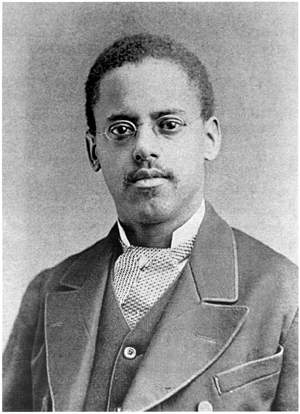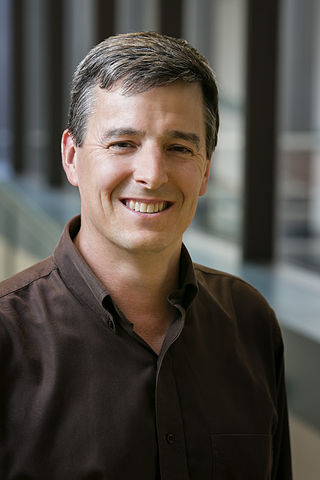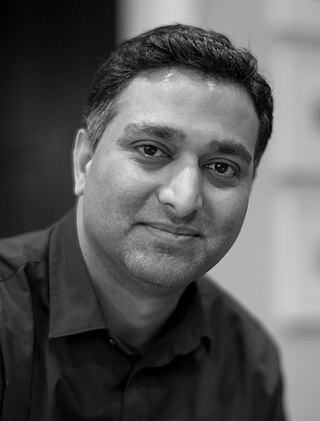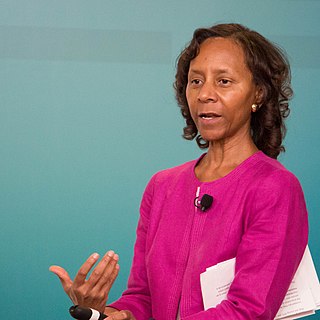
Dean Lawrence Kamen is an American engineer, inventor, and businessman. He is known for his invention of the Segway and iBOT, as well as founding the non-profit organization FIRST with Woodie Flowers. Kamen holds over 1,000 patents.

A combination lock is a type of locking device in which a sequence of symbols, usually numbers, is used to open the lock. The sequence may be entered using a single rotating dial which interacts with several discs or cams, by using a set of several rotating discs with inscribed symbols which directly interact with the locking mechanism, or through an electronic or mechanical keypad. Types range from inexpensive three-digit luggage locks to high-security safes. Unlike ordinary padlocks, combination locks do not use keys.

Lewis Howard Latimer was an American inventor and patent draftsman. His inventions included an evaporative air conditioner, an improved process for manufacturing carbon filaments for light bulbs, and an improved toilet system for railroad cars. In 1884, he joined the Edison Electric Light Company where he worked as a draftsman.
Jerome "Jerry" Hal Lemelson was an American engineer, inventor, and patent holder. Several of his inventions and works in the fields in which he patented have made possible, either wholly or in part, innovations like automated warehouses, industrial robots, cordless telephones, fax machines, videocassette recorders, camcorders, and the magnetic tape drive used in Sony's Walkman tape players. Lemelson's 605 patents made him one of the most prolific inventors in American history.

Jacob Rabinow was an engineer and inventor. He earned a total of 229 U.S. patents on a variety of mechanical, optical and electrical devices.

Irving "Al" Gross was a pioneer in mobile wireless communication. He created and patented many communications devices, specifically in relation to an early version of the walkie-talkie, Citizens' Band radio, the telephone pager and the cordless telephone.

A keypad is a block or pad of buttons set with an arrangement of digits, symbols, or alphabetical letters. Pads mostly containing numbers and used with computers are numeric keypads. Keypads are found on devices which require mainly numeric input such as calculators, television remotes, push-button telephones, vending machines, ATMs, point of sale terminals, combination locks, safes, and digital door locks. Many devices follow the E.161 standard for their arrangement.
Amy Smith is an American inventor, educator, and founder of the MIT D-Lab and senior lecturer of mechanical engineering at MIT.

John A. Rogers is a physical chemist and a materials scientist. He is currently the Louis Simpson and Kimberly Querrey Professor of Materials Science and Engineering, Biomedical Engineering, and Neurological Surgery at Northwestern University.
James Lee Fergason was an American inventor and business entrepreneur. A member of the National Inventors Hall of Fame, Fergason is best known for his work on an improved Liquid Crystal Display, or LCD. He held over one hundred U.S. patents at the time of his death.

Martin Cooper is an American engineer. He is a pioneer in the wireless communications industry, especially in radio spectrum management, with eleven patents in the field.

Nathaniel C. Wyeth was an American mechanical engineer and inventor. He is best known for creating a variant of polyethylene terephthalate that could withstand the pressure of carbonated liquids. Made of recyclable PET plastic, lighter than glass and virtually unbreakable, Wyeth's invention is used widely today for both carbonated and non-carbonated drinks.
The Lemelson Foundation is an American 501(c)(3) private foundation. It was started in 1993 by Jerome H. Lemelson and his wife Dorothy. The foundation held total net assets of US$444,124,049 at the end of 2020 and US$484,432,021 at the end of 2021.

Nathan "Nate" Ball is an American mechanical engineer, entrepreneur, TV host, children's author, pole vaulter, and beatboxer.
Dr. Thomas J. "Tom" Fogarty is an American surgeon and medical device inventor. He is best known for the invention of the embolectomy catheter, which revolutionized the treatment of blood clots (embolus).

Richard H. Frenkiel is an American engineer, known for his significant role in the early development of cellular telephone networks.

The push-button telephone is a telephone that has buttons or keys for dialing a telephone number, in contrast to having a rotary dial as in earlier telephone instruments.
Squid Labs was an American independent research and development company founded by a group of four MIT graduates. In 2004, Colin Bulthaup, Dan Goldwater, Saul Griffith, and Eric Wilhelm moved from the East Coast to California to found the company known as Squid Labs. During its years of existence from 2004 to 2007, Squid Labs added three more members to its team: Geo Homsy, Corwin Hardham and Ryan McKinley. Working out of a warehouse in Emeryville, the group adopted the slogan "We're not a think tank, we're a do tank." and created a handful of patents and inventions including an electronically sensed rope, portable pull-cord generators, and a machine that could manufacture eyeglasses of any prescriptions at extremely low cost. Squid Labs was also the birthplace for many companies still running today, such as Makani Power and Howtoons. Although the company no longer exists, Squid Lab's co-founder, Saul Griffith created a similar company in San Francisco named Otherlab.

Ramesh Raskar is a Massachusetts Institute of Technology associate professor and head of the MIT Media Lab's Camera Culture research group. Previously he worked as a senior research scientist at Mitsubishi Electric Research Laboratories (MERL) during 2002 to 2008. He holds 132 patents in computer vision, computational health, sensors and imaging. He received the $500K Lemelson–MIT Prize in 2016. The prize money will be used for launching REDX.io, a group platform for co-innovation in Artificial Intelligence. He is well known for inventing EyeNetra, EyeCatra and EyeSelfie, Femto-photography and his TED talk for cameras to see around corners.

Marian Rogers Croak is a Vice President of Engineering at Google. She was previously the Senior Vice President of Research and Development at AT&T. She holds more than 200 patents. She was inducted into the Women in Technology International Hall of Fame in 2013. In 2022, Croak was inducted into the National Inventors Hall of Fame for her patent regarding VoIP Technology. She is one of the first two Black women to receive that honor, along with Patricia Bath. Her invention allows users to make calls over the internet instead of a phone line. Today, the widespread use of VoIP technology is vital for remote work and conferencing.













